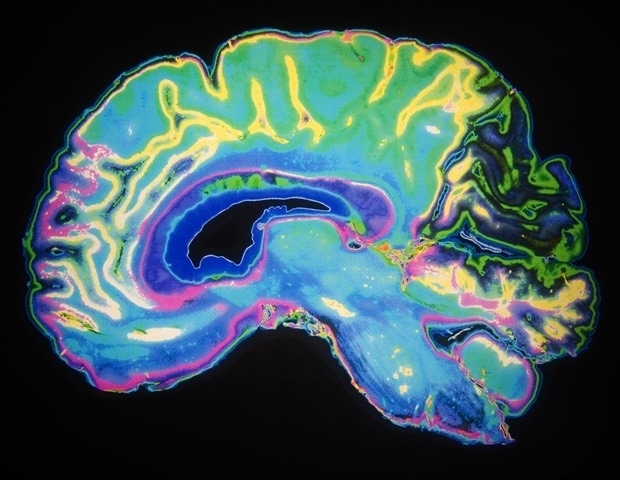Researchers find new way to remove waste after brain hemorrhage
University of Helsinki and Taiwanese researchers have found a new way to remove waste from the brain after hemorrhage.
Intracerebral hemorrhage, and bleeding into the brain tissue, is a devastating neurological condition affecting millions of people annually. It has a high mortality rate, while survivors are affected by long-term neurological deficits. No medication has been found to support brain recovery following hemorrhage.
In an international collaboration, researchers from the Brain Repair laboratory, University of Helsinki, together with their Taiwanese colleagues investigated whether a protein called cerebral dopamine neurotrophic factor (CDNF) has potential as a treatment for brain hemorrhage.
Researchers suggest that cerebral dopamine neurotrophic factor, a protein being currently tested for Parkinson's disease treatment, also has therapeutic effects and enhances immune cell's response after brain hemorrhage.
The authors found that the administration of cerebral dopamine neurotrophic factor accelerates hemorrhagic lesion resolution, reduces brain swelling, and improves functional outcomes in an animal model of brain hemorrhage.
Surprisingly, we found that cerebral dopamine neurotrophic factor acts on immune cells in the bleeding brain, by increasing anti-inflammatory mediators and suppressing the production of the pro-inflammatory cytokines that are responsible for cell signaling. This is a significant step towards the treatment of injuries caused by brain hemorrhage, for which we currently have no cure."
Mikko Airavaara, Professor, University of Helsinki
Dr. Vassileios Stratoulias from the Brain Repair laboratory comments, "It's interesting to note that after a bleeding episode, the brain contains a lot of waste and debris. Cerebral dopamine neurotrophic factor encourages immune cells in the brain to consume and remove the waste and debris, which is essential for the brain's recovery!".
The administration of cerebral dopamine neurotrophic factor also resulted in the alleviation of cell stress in the area that surrounds the hematoma.
Finally, the researchers demonstrated that systemic administration of cerebral dopamine neurotrophic factor promotes scavenging by the brain's immune cells after brain hemorrhage and has beneficial effects in an animal model of brain hemorrhage.
University of Helsinki
Tseng, K.-Y., et al. (2023). Augmenting hematoma-scavenging capacity of innate immune cells by CDNF reduces brain injury and promotes functional recovery after intracerebral hemorrhage. Cell Death & Disease. doi.org/10.1038/s41419-022-05520-2
Posted in: Medical Science News | Medical Research News | Medical Condition News
Tags: Animal Model, Bleeding, Brain, Brain Hemorrhage, Cell, Cytokines, Dopamine, Intracerebral Hemorrhage, Laboratory, Mortality, Parkinson's Disease, Protein, Research, Stress
Source: Read Full Article
